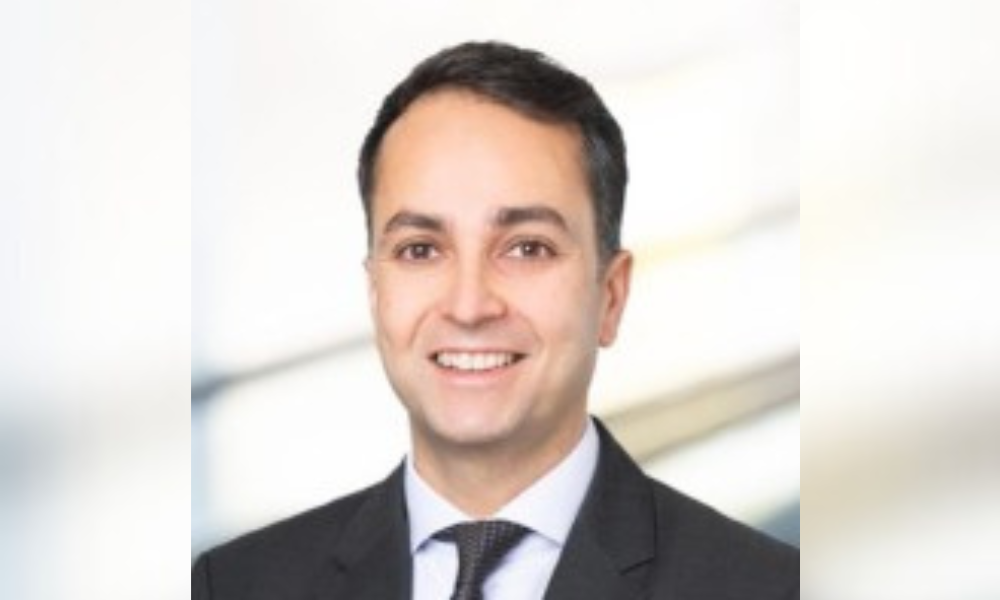

 Heading into the 1/1 reinsurance renewals period, there’s a strong sense that ‘nothing gold can stay’ across the market. Reflecting on the “almost perfect” state of the market today, Vivek Bajaj (pictured right), head of sales for insurance solutions at Moody’s, highlighted that the present conditions – those of a hard market where prices are high and there’s plenty of demand to go around – cannot be expected to last forever.
Heading into the 1/1 reinsurance renewals period, there’s a strong sense that ‘nothing gold can stay’ across the market. Reflecting on the “almost perfect” state of the market today, Vivek Bajaj (pictured right), head of sales for insurance solutions at Moody’s, highlighted that the present conditions – those of a hard market where prices are high and there’s plenty of demand to go around – cannot be expected to last forever.
“Everyone’s enjoying those conditions, however, I do believe that, in 2025, you will see more pricing competition emerge and there will be more striving for business, as opposed to business just falling into your lap,” he said. “Because we’re seeing the economic environment changing and we’re seeing geopolitical tensions continue, and, at a certain point, something will have to give. We’re also seeing cat events. We’ve crossed $100 million in nat-cat losses in 2024 again, and I think 2025 will bring more of the same.”
Turning his attention to what’s happening in Europe, he highlighted the need to consider the full complement of atmospheric perils impacting the region. Being able to accurately understand perils such as floods and windstorms required extreme granularity in terms of loss data and exposure data. For Moody’s, being able to provide ease of access to this data and to allow clients to manipulate their views of that information has been a game-changer.
Clients want multiple views of risk, he said, where their views are combined with the views of their partners. In order to meet that requirement, Moody’s is offering its HD models on a platform where clients can run other models as well. With regard to European perils, these HD views are now being used at a significant scale and so have, in effect, become the market currency. “It’s no longer in the early adopter phase, it’s in full adoption phase across the board, including all the major reinsurers.”
There’s a lot of increasing scrutiny on secondary perils but for Bajaj, it’s more accurate to refer to these as ‘earnings perils’ given the impact they can have on a business’s bottom line. “They're really not secondary depending on the time and place of them occurring,” he said. “In the past, these were perhaps things which weren't on the radar, but sometimes, so-called secondary perils are actually primary on your radar at a certain given moment in time.
“So, I think you will see a lot of increased focus on these earnings perils going forward. I also believe you will see emerging new perils which you didn't see before. For example, the concept of drought was thought of as a peril that only regularly occurs in Africa. But because of climate change and extreme rises in temperatures, you’re going to see this increasingly in Europe.”
He looked to France where there is a growing focus on subsidence as a peril, and noted that Moody’s is getting a lot of demand to start looking at developing models in that space as well. As a result, he said, it can be expected that not only will these earnings perils increase in frequency and severity but it will also be home to new and emerging risks.
With years of experience in supporting the financial services sector and having come to Moody’s via its acquisition of RMS in 2021, Bajaj has seen the shift in how people feel about and engage with data and data analytics first-hand. “What happens is, if you’re only looking in the rear-view mirror and saying ‘these are the historical exposures, let’s take into account the last five years’, and you model for that going forward, then you’re only to solve for the standard use cases that you always had for application of that data.
“[It’s critical to also look] at non-obvious patterns that are beginning to emerge, for example, the impact of one-in-100-year-events, which are now happening a lot more frequently than once in 100 years. When they hit, the volume of losses from them is also astronomical. So, you do see clients looking at forward-looking events which may not have occurred in the past, and modeling for those as well, as opposed to only looking back.
